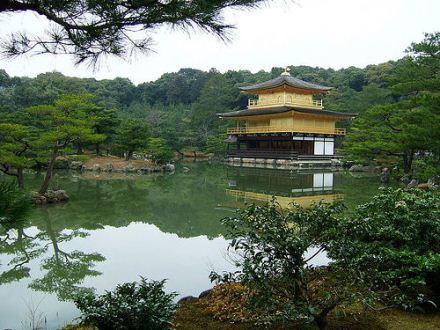This week’s feature country is Japan, and before we delve into the deliciousness that this Asian country has to offer, I would like to address the recent earthquakes and the subsequent events that have occurred there. If you haven’t already, make a donation to the Canadian or American Red Cross to assist in the relief. In Canada, text ASIA to 30333 to donate $5; if you’re in the US, text REDCROSS to 90999 to donate $10.
Japan is located to the east of China, North and South Korea, and Russia. Its climate is temperate, and while this is ideal for the growth of many fruits and vegetables, the mountainous landscape makes it difficult. Luckily, it’s ideal for harvesting rice, the main ingredient in Japanese cuisine.
While other cultures, namely Chinese and Korean, have influenced Japan’s cuisine, it’s safe to say that Japanese food is pretty unique. It has developed over time, and the cuisine as we know it has been developed only over the last few hundred years (check out the history of Japan here).
So how have things changed? Well, at one point in time, the Buddhist and Shinto religions, and therefore the entire country, prohibited the consumption of any kind of meat. Some people started eating meat again in the 15th century, but it was okay to eat it publicly in the late 19th century, when the Emperor at the time embraced the Western world. While meat is still eaten, it is not consumed as widely as in the West.
As a result of meat not being eaten for so long, and the fact that Japan is an island nation, seafood has always been widely available. For those inland, freshwater fish is the norm. Enter: Sushi. Japan’s most famous snack-food was originally made with fermented fish, but the raw-fish, hand rolled type that the world has come to love came about in the late 18th century.
Milk products have never been very popular in Japan, nor have spices or heavily flavoured foodstuffs. Common ingredients used include: kabu (turnip), lettuce, ninjin (carrot), cabbage, horenso (spinach), minuza (Japanese mustard greens), tamanegi (onion), okura (okra), shima rakkyo (similar to shallots), kyuri (cucumber), satsumaimo (sweet potato), kabocha (pumpkin), daikon (giant white radish), nasu (eggplant), takenoko (bamboo), satoimo (taro root), renkon (lotus root), mushrooms, seaweed, soybeans, noodles, niboshi (dried baby sardines), sesame products (oil, seeds, salt), soy sauce, rice vinegar, wasabi, ginger, and garlic.
Common dishes include: Motsunabe (beef offal with cabbage in a light soup), Teriyaki (grilled or fried meat, chicken, seafood or vegetables with sweet soy sauce), Sashimi (raw sliced food (usually fish) with soy sauce and wasabi), Tempura (deep-fried vegetables or seafood), Gyoza (dumplings filled with pork and vegetables), Takoyaki (fried dumpling filled with octopus), and Miso soup (soup with miso and often seaweed and/or vegetables and tofu).
Varieties of green tea (such as Matcha, Sencha, Genmaicha, and Kukicha) are the most popular beverages in Japan, though soft drinks, fruit juices, and alcoholic beverages like Sake and beer are also very common.
So, what’s your favourite Japanese dish? Stay tuned – next week I’ll have an authentic Japanese recipe for you to try out!
Photo Credits: Mr Wabu, np&djjewel, and avlxyz.


